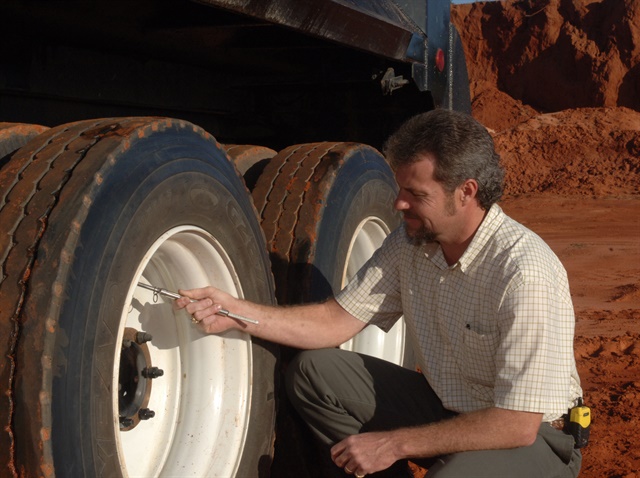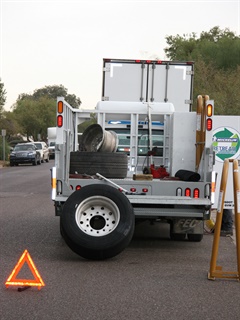
Today, Monday May 29, marks the beginning of National Tire Safety Week. It’s a consumer-focused initiative presented by the Rubber Manufacturers Association designed to remind passenger car drivers and owners to get their tires into tip-top shape prior to the beginning of the summer road trip season, which begins officially with the long Memorial Day weekend.
This year, the American Automobile Association estimates that more than 39 million Americans will have hit the road this past weekend on a trip of 50 miles or more. That’s a lot of potential flat tires.
But what’s 50 miles? Heck, our tires aren’t even warmed up in 50 miles. Every day of the year, long haul trucks run the equivalent of an average family’s “big summer road trip” or cross-state visit to Grandma’s place, so reminders such as this one could be easily dismissed. However, we all know that tire maintenance isn’t one of trucking’s strongest suits.
Besides, in less than two weeks we’ll be facing CVSA’s RoadCheck 2017 (June 6-8). While the stated focus of this year’s RoadCheck event is cargo securement, rest assured that inspectors will not be ignoring tires.
If there are problems with your tires, you might need some time to schedule service to sort out the problem. Even if time is tight, remember that a thorough tire and wheel inspection will take a lot less time than the service call required to repair a tire gone bad.
“Not practicing proper tire care is the biggest pitfall we see,” says Jason Evans, director of store operations for GCR Commercial Tires & Service, a division of Bridgestone Americas’ Tire Operations. “We expect our tires to do a lot for us, and they need to be inspected frequently. By being proactive in tire maintenance, fleets can feel confident that their trucks are operating in a way that promotes safety and productivity.”
To kick off National Tire Safety Week, Evans urges fleets and drivers to carefully inspect their tires before elevated summer temperatures and hot pavement take their toll on weak tires.
~ Check tire inflation pressure at each wheel position when the tire is cold with a reliable or calibrated pressure gauge, and inflate the tire to the fleet’s recommended pressures. Running underinflated tires increases the risk of a blowout or casing damage due and the opportunity for irregular wear to set in. Never bleed or reduce air pressure from a hot tire. (Check out Tuesday’s installment for the everything you need to know about inflation pressure)
~ Make a thorough check for uneven wear due to some mechanical deficiency. Consider rotating tires that already show signs of irregular wear to even out the wear, and of course, determine the cause of the wear and repair it.

Juan Britos, the senior technical services specialist at Hankook Tire reminds drivers that inspections should be carried out weekly at a minimum, but more frequent inspections won’t do any harm.
“Unless you look, you may not be aware of a developing problem, such as nail or screw that hasn’t yet completely penetrated the casing,” he says. “Frequent visual inspection can reveal problems like recent cuts or sidewall damage that may have just occurred.”
Here’s what to look for on thorough tire inspection:
~ Check tread conditions for tread depth, signs of uneven wear, damage such as flat-spotting, cuts, penetrations, etc. And don’t overlook the sidewalls, particularly the inside sidewalls that you can’t see from curbside.
~ If the tires are getting close to the minimum tread depth, (4/32 on a steer tire and 2/32 on a drive or trailer tire) start making plans to replace them. Tire with less than the minimum tread depth can be placed out of service during a roadside inspection.
~ While you’re at it, check the lubricant level in the wheel hubs, where applicable, and look for signs of leakage around the hub cap or for oil on the inner sidewalls of the tire.
Downtime is always a concern, but from July through October – or peak season – fleets are faced with heavy demands, making uptime a premium and tire maintenance a necessity. While National Tire Safety Week is typically aimed at drivers of passenger vehicles, take it as a reminder that commercial tires need periodic attention too. You don’t want to be going into your peak hauling season with weak tires.
Tuesday’s National Tire Safety Week maintenance tip focuses on inflation.
Follow @HDTrucking on Twitter
